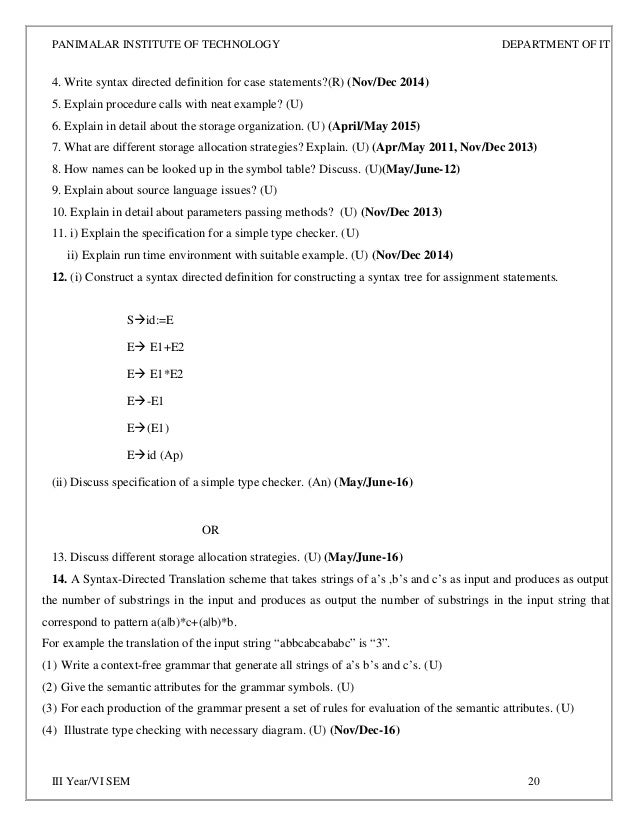Storage Organization And Allocation Strategies In Compiler Design
Static storage allocation (1/3) there are two di erent approaches for run time storage allocation. static allocation. dynamic allocation. static allocation: uses no stack and heap. a.r. in static data area, one per procedure. names bounds to locations at compiler time. every time a procedure is called, its names refer to the same pre-assigned. Compiler construction 7.2-7.3 storage organization / allocation strategies 7.2 storage organization � runtime storage consists of � generated target code � data objects � static: stored in static data area � dynamic : stored on heap � stack to keep track of procedure activations � procedure call sequence:. Run-time storage run-time environment storage organization storage allocation strategies dynamic storage allocation 16 17. organization of storage fixed-size objects can be placed in predefined locations. the heap and the stack 17 need room to grow, however. 18. run-time stack and heap the stack is used to store: procedure activations..
In static allocation the compiler can determine the amount of storage required by each data object. and therefore it becomes easy for a compiler to find the addresses of these data in the activation record 2. stack allocation stack allocation strategy is a strategy in which the storage is organized as stack. this stack is also called control stack.. Storage organization the executing target program runs in its own logical address space in which each program value has a location. the management and organization of this logical address space is shared between the complier, operating system and target machine.. Compiler design lecture notes (subject code: bcs-305) for bachelor of technology in computer science and engineering & information technology source language issues, storage organization, storage-allocation strategies, access to nonlocal names, parameter passing, symbol tables, language facilities for dynamic storage allocation,.

Komentar
Posting Komentar